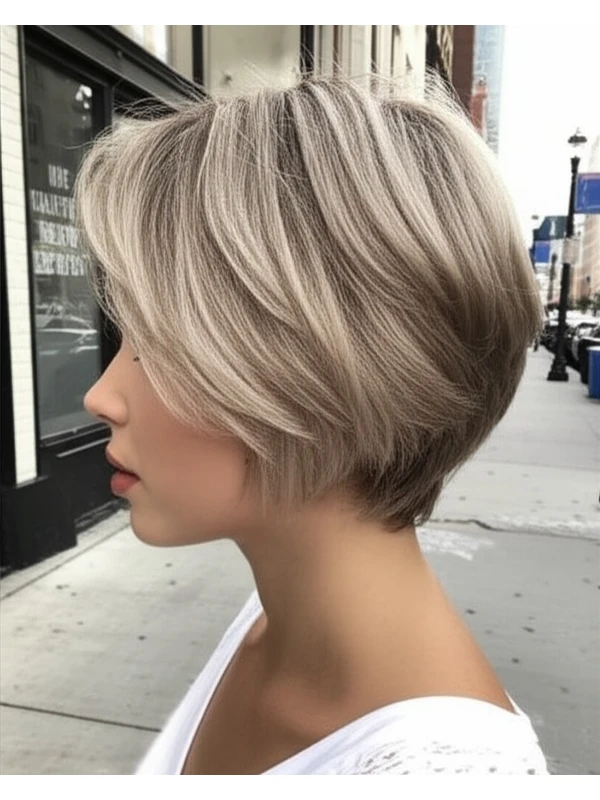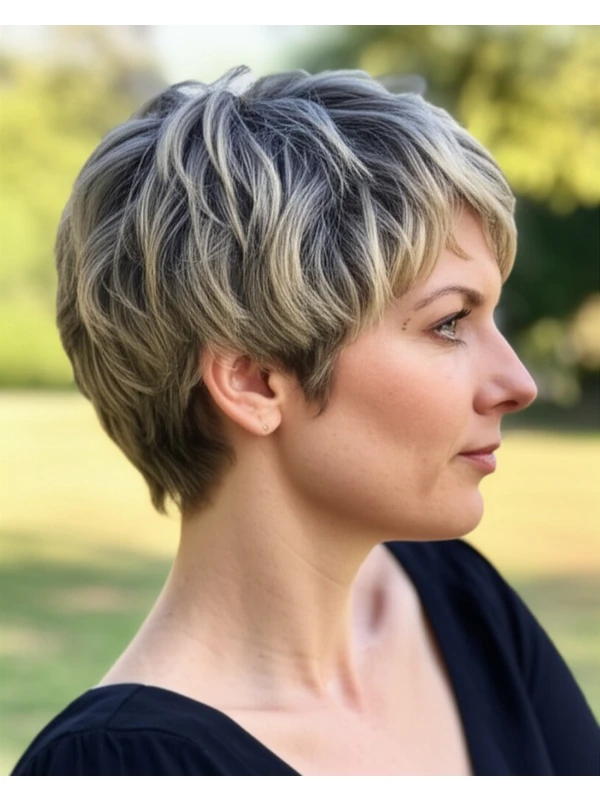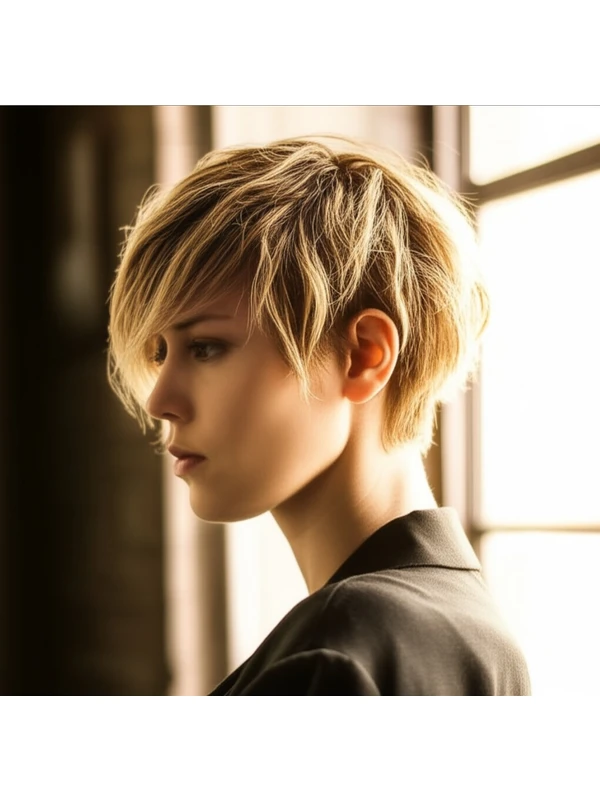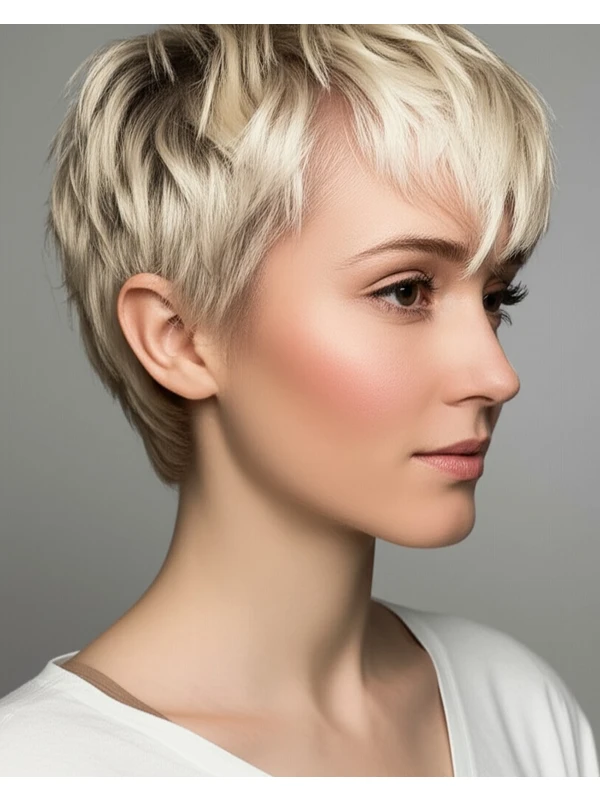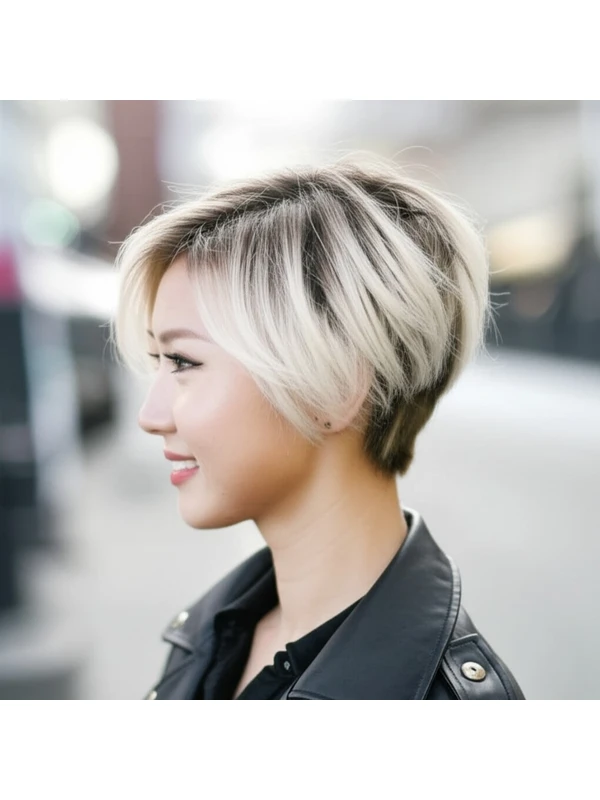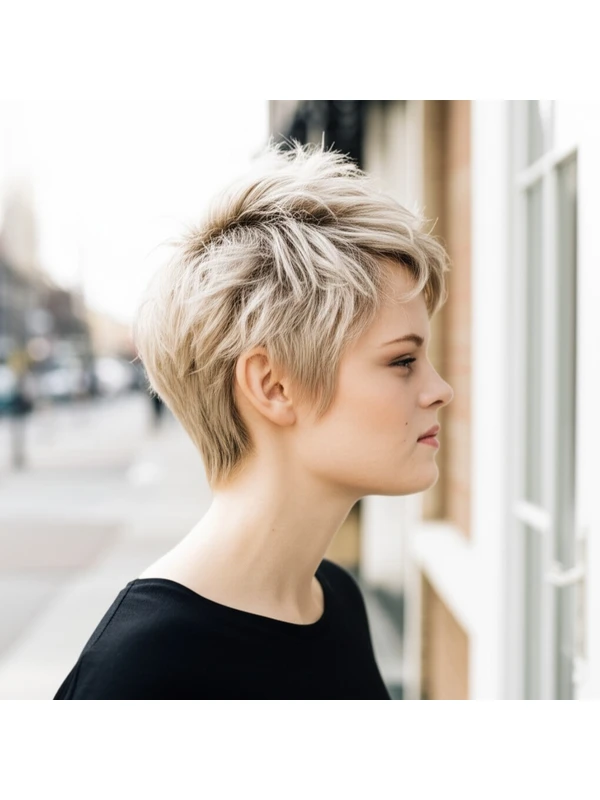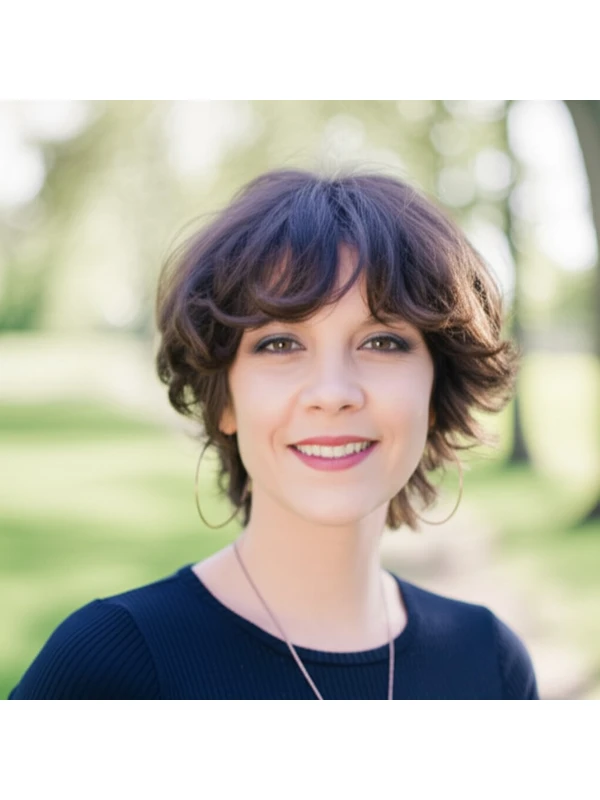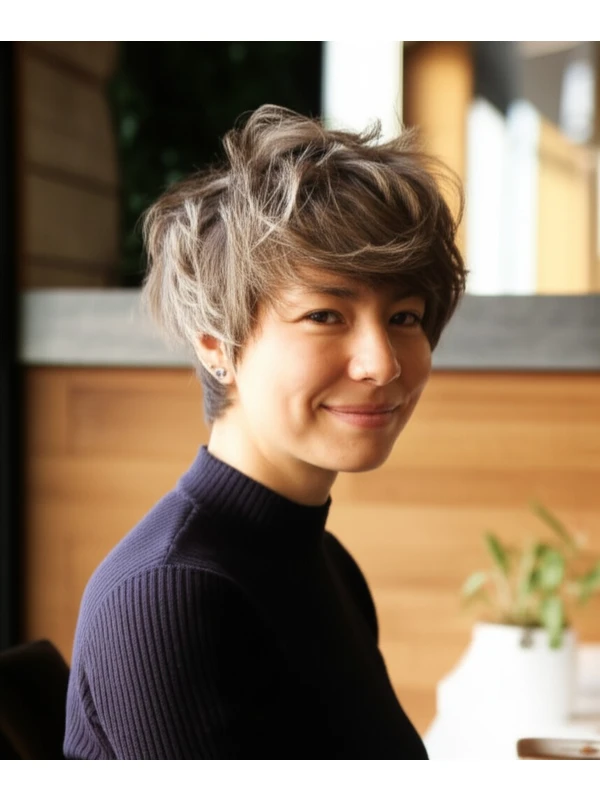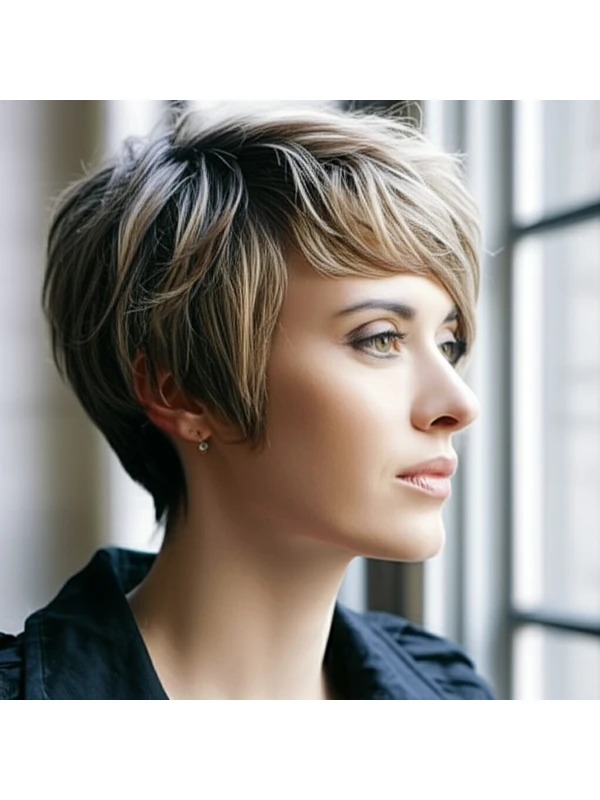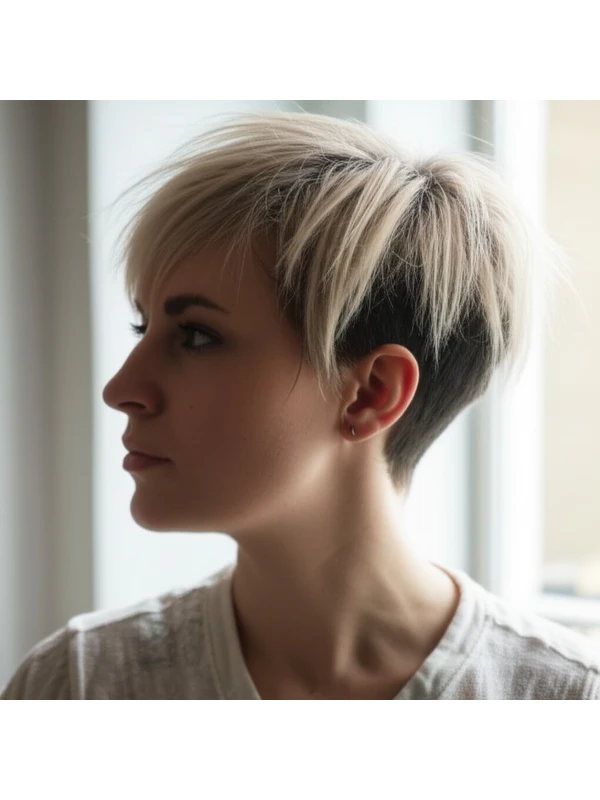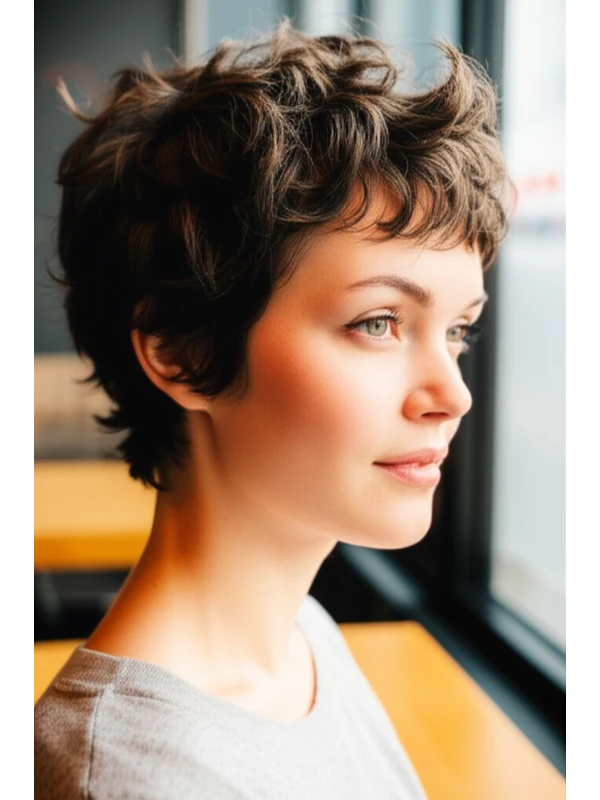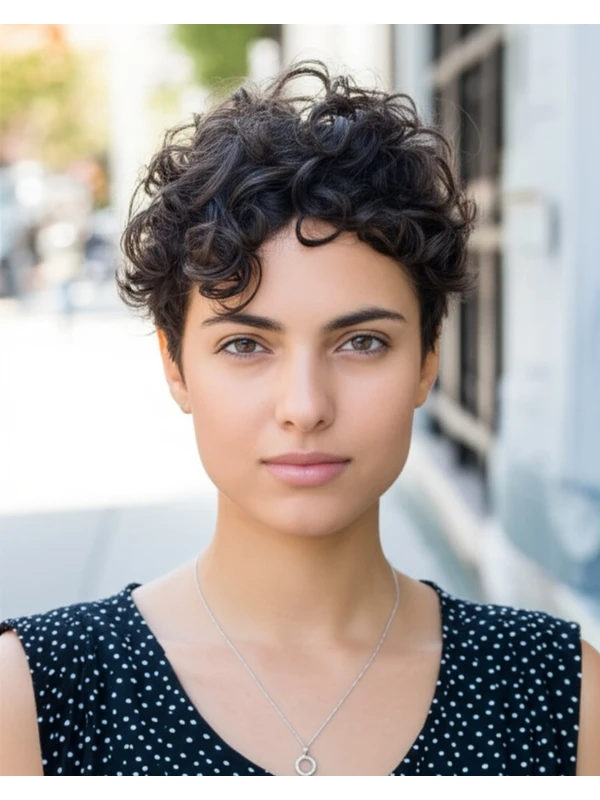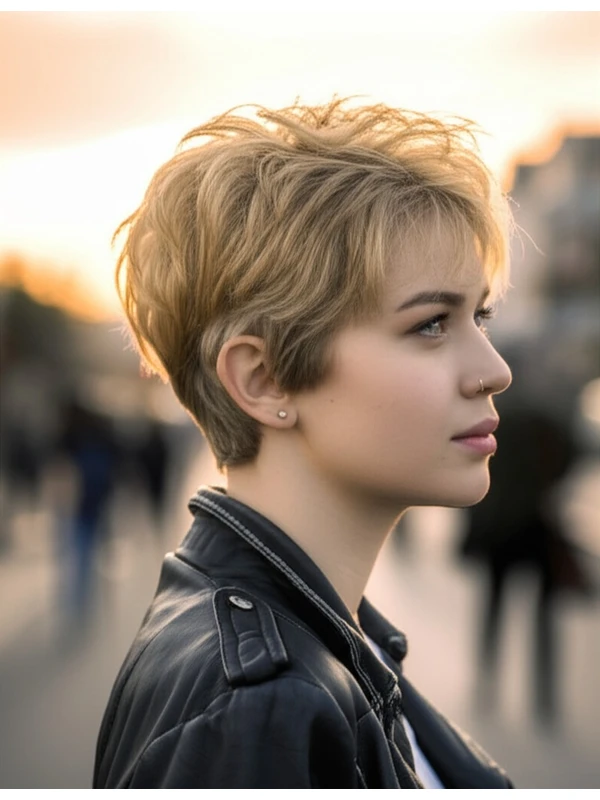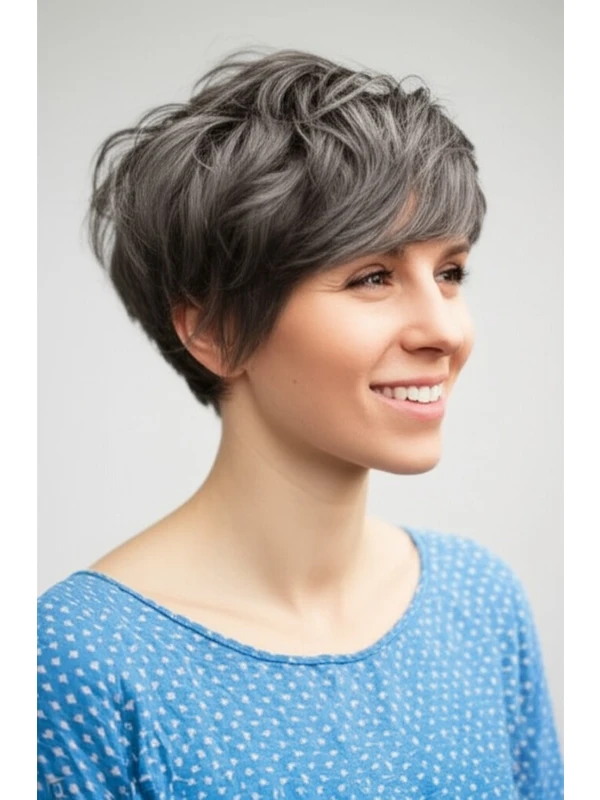#The Long Pixie: A Guide to Effortless Style
The long pixie is a modern classic – a haircut that offers the freedom of longer hair with the edgy coolness of a pixie cut. It’s versatile, flattering on many face shapes, and surprisingly easy to style (with a few tricks!). This guide will walk you through everything you need to know about rocking this chic look.
#1) Background & Definition: What is a Long Pixie?
The long pixie isn't just a short haircut; it’s an art form! It sits somewhere between a traditional pixie and a bob, offering more length for styling options while retaining that playful, cropped feel.
- Cut Geometry: Think of it as having shorter layers at the nape of your neck and around the ears, gradually lengthening towards the crown of your head. The front pieces are typically longer than the back, allowing for bangs or face-framing layers.
- Key Features: Texture is essential. A long pixie shouldn’t look blunt; it needs movement and dimension. Soft layering creates this effect.
- Length Ranges: Typically, the longest point (usually at the crown) falls between 4–6 inches (10-15cm). The shortest layers around the nape are usually no shorter than ½ inch (1.27 cm).
- Alternative Names: You might also hear it called a "long crop," a "layered pixie," or simply, “the modern pixie.”
#2) Face Shape Fit: Finding Your Perfect Angle
The long pixie is surprisingly adaptable! However, certain tweaks can maximize its flattering power.
- Oval Faces: Lucky you! The long pixie generally looks fantastic on oval faces. Embrace the natural shape with minimal layering and a side part to enhance symmetry. A soft, textured fringe works beautifully.
- Round Faces: Add height at the crown with strategic layers to elongate your face. Avoid blunt bangs that can emphasize roundness. Side-swept fringes or longer, angled pieces are better choices.
- Square Faces: Soften strong jawlines by opting for a long pixie with soft, rounded layers and a side part. A wispy fringe can also help soften angles.
- Heart Faces: Balance the wider forehead with face-framing layers that draw attention downward. A longer, sweeping fringe is often very flattering.
- Diamond Faces: The long pixie's texture and layering will complement diamond shapes by softening angular features. A side part adds asymmetry and balance.
- Oblong Faces: Avoid styles that emphasize length further. Opt for a more voluminous cut with shorter layers at the sides to create width. A full fringe can help shorten the face visually.
#3) Body Proportions & Height Guidance: Finding Your Silhouette
The long pixie's impact isn’t just about your face; it plays with your overall proportions too!
- Petite: A longer, more voluminous long pixie adds visual height and prevents you from looking overwhelmed by the cut.
- Average: You have a lot of flexibility! Experiment with different lengths and layering to find what suits you best.
- Tall: A slightly shorter, sleeker long pixie can prevent you from appearing too elongated.
- Narrow Shoulders: Volume at the crown will broaden your shoulders visually. Avoid styles that are too flat on top.
- Broad Shoulders: Keep the volume balanced; avoid excessive height at the crown to prevent widening your shoulder line.
- Short Neck: A longer fringe or face-framing layers can help elongate the neck visually.
- Long Neck: Shorter, layered styles add width and balance a long neck.
#4) Works Best With Hair Types & Densities: Texture is Key!
The right styling techniques are vital for success with any hair type.
- Straight Hair: A long pixie looks incredibly chic on straight hair but requires product to create texture (more on that later!).
- Wavy Hair: The natural wave adds instant movement and volume, making the style easier to achieve. Embrace your texture!
- Curly/Coily Hair: A long pixie can be stunning with curls or coils, but shrinkage is a major factor. Communicate clearly with your stylist about desired length post-shrinkage (typically add 2–4 inches depending on curl pattern). Layering is crucial to avoid a triangular shape.
- Fine Hair: Strategic layering creates the illusion of thickness. Avoid overly blunt cuts that can make fine hair look even thinner.
- Medium Hair: The long pixie works beautifully with medium density – you have enough volume to play with!
- Thick Hair: Thinning shears (ask your stylist!) and precise layering are essential to remove weight and prevent the style from looking bulky.
#5) Styling Variations: From Casual Cool to Evening Glam
The beauty of a long pixie is its versatility.
- Sleek vs Textured: Sleek styles use smoothing serums for a polished look, while textured styles embrace natural movement with texturizing sprays or waxes.
- Middle vs Side Part: A middle part creates symmetry and balance, while a side part adds softness and asymmetry.
- Fringe Variations: Wispy bangs, blunt fringes (for bolder looks), or longer, face-framing pieces – the possibilities are endless!
- Occasion Styling:
- Casual: Air dry with texturizing cream for a low-maintenance look.
- Office: Sleek and polished with a smoothing serum and minimal heat styling.
- Evening: Add volume at the roots with mousse, create defined waves with a curling iron or wand, and finish with hairspray.
#6) Maintenance: Keeping Your Pixie Sharp
Regular trims are essential to maintain shape!
- Trim Cadence: Every 4-6 weeks is typical.
- At-Home Routine: Wash 2-3 times a week (depending on your scalp). Apply leave-in conditioner after washing, especially if you have curly or coily hair.
- Heat vs Air Dry: Minimize heat styling to protect hair health. When using heat, always use a heat protectant!
- Product Checklist:
- Shampoo & Conditioner (suited for your hair type)
- Leave-in Conditioner (especially important for dry or curly/coily hair)
- Texturizing Cream/Paste (for texture and definition)
- Root Lifter (for volume at the crown)
- Hairspray (to hold style in place)
- Estimated Daily Styling Time: 5-15 minutes, depending on your desired look.
#7) Grow-Out Roadmap: Evolving Your Style
The long pixie isn’t a static cut; it evolves!
- Months 1-3: The shape is at its most defined. Regular trims are crucial to maintain the layers and prevent awkwardness.
- Months 4-6: The length starts to grow out. Communicate with your stylist about how you want the style to transition – do you want it longer, softer, or more blended?
- Maintaining Shape: Between cuts, use styling products to enhance texture and volume. Avoid pulling hair back too tightly, as this can create a harsh line.
#8) Color Pairings: Enhancing Your Pixie’s Dimension
Color can dramatically elevate your long pixie!
- Cool Undertones (pink, blue): Ashy blondes, cool browns, and even icy grays look stunning.
- Warm Undertones (yellow, gold): Honey blondes, golden browns, copper tones – embrace the warmth!
- Low-Commitment Options: Balayage or highlights add dimension without a full color change. Root shadows can also create depth.
#9) Season & Occasion Guide: Styling for Every Moment
- Spring/Summer: Embrace lighter textures and brighter colors. A tousled, beachy look is perfect for warmer weather.
- Fall/Winter: Add warmth with richer tones and deeper layers. A sleeked-back style can be elegant for formal occasions.
- Work: Polished and professional – a side part and minimal texture are ideal.
- Weddings: Soft, romantic waves or an updo that shows off the face-framing layers.
- Parties: Experiment with bolder colors, textures, and accessories!
#10) Cost & Time: What to Expect at the Salon
- Salon Time: Typically 45 minutes – 1.5 hours.
- Estimated Price Range: Relatively moderate; expect a slightly higher price than a simple trim due to layering and shaping involved, but less than a full-length style.
#11) Pros & Cons: Weighing the Trade-offs
Pros: Versatile styling options, flattering on many face shapes, relatively low maintenance (with proper care), edgy and modern look. Cons: Requires regular trims to maintain shape, can be tricky to style initially until you master techniques, may not suit those seeking a very long or flowing hairstyle.
#12) Salon Consultation Script: Questions to Ask Your Stylist
Here are some prompts to help guide your conversation with your stylist:
- "I'm interested in a long pixie cut. Can you show me examples of the style on different face shapes?"
- “What length would be best for my hair type and desired look, considering shrinkage if I have curls/coils?”
- "How can we incorporate layers to balance my [face shape]?"
- "Can you demonstrate a few simple styling techniques I can do at home?"
- "What products would you recommend for maintaining the style's shape and texture?"
#FAQs: Your Burning Questions Answered
- Is a long pixie hard to style? It takes practice, but with the right products and techniques, it’s manageable!
- Can I wear bangs with a long pixie? Absolutely! Bangs are a great way to customize the look.
- How do I prevent my hair from looking too flat? Focus on layering and root lift – use mousse or volumizing spray at the roots before styling.
- What if my hair shrinks up more than expected after cutting? Discuss your curl pattern with your stylist before they cut, so they can account for shrinkage.
- Can I still wear a ponytail with a long pixie? It’s possible but will look quite high and cropped – it's not the ideal style for ponytails.
- Will this hairstyle make me look older or younger? The long pixie is generally considered to be youthful, especially when styled with texture and movement!
